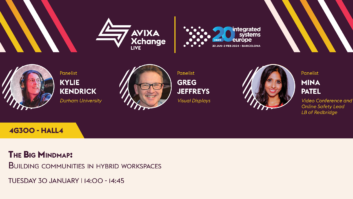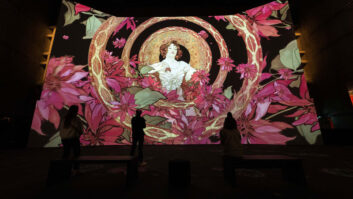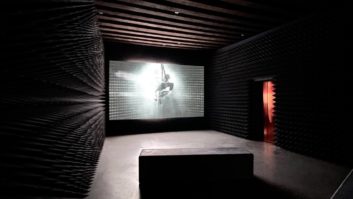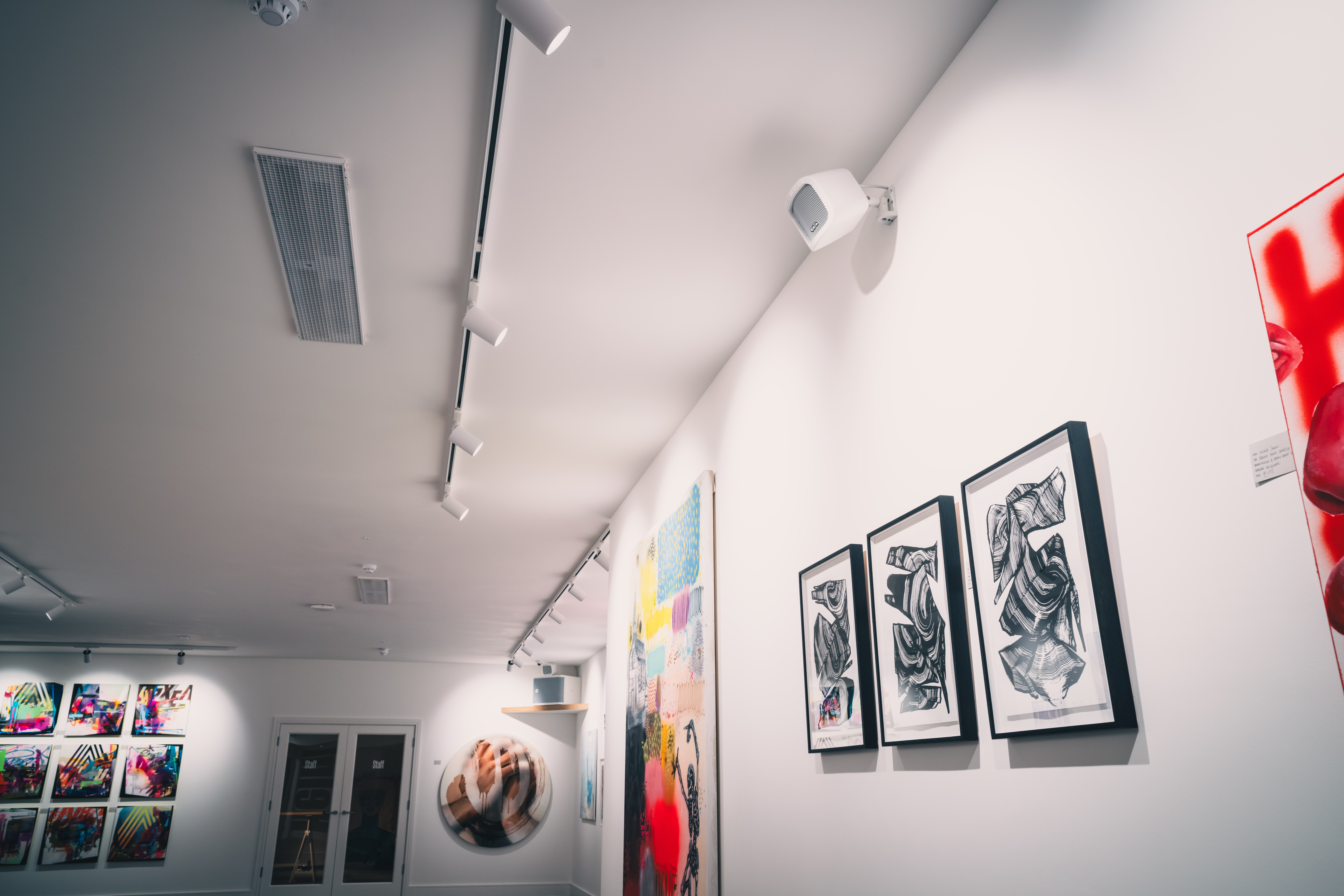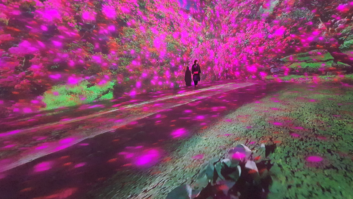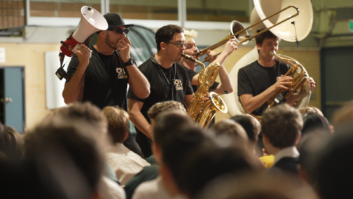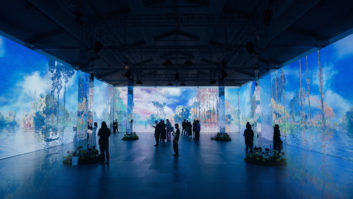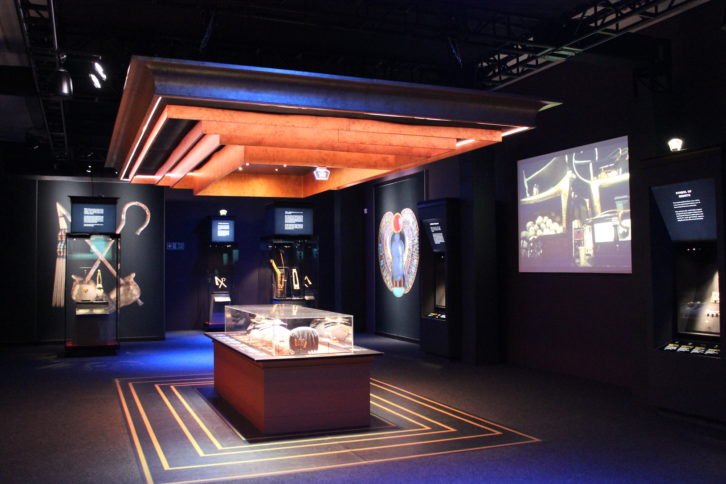
After breaking records in LA and Paris, Tutankhamun: Treasures of the Golden Pharaoh has arrived at London’s Saatchi Gallery to much critical acclaim. Jo Ruddock gets a behind the scenes look at what it takes to create an AV experience for a travelling exhibition of such magnitude.
Marking 100 years since the discovery of King Tutankhamun’s tomb, the latest blockbuster exhibition brings 150 of the treasures found inside the Boy King’s tomb to London, around 60 of them have never been seen outside of Egypt before. It is also the last time these items are expected to travel before they’re permanently housed in the Grand Egyptian Museum, set to open in Giza in 2021.
Arranged across multiple spaces in the Saatchi Gallery, the exhibition combines audio soundscapes with impressive projection techniques and digital content to create a compelling story of Tutankhamun’s journey into the afterlife andhis rebirth withthe influence he has had on media and culture uponrediscovery.
As soon as you step into the first room of the exhibition, not only is the atmosphere set, but so are your expectations about the role AV will play in this impressive collection.
The darkness of the Intro Theatre and the powerful audio delivered by JBL AC18/95 Speakers and ASB6112 subwoofers power by Crown amplification which add to the feeling of immersion delivered by the custom-designed 180-degree screen, which delivers an engagingintro video about Tutankhamun and the discovery of his tomb by Howard Carter.
While undoubtedly set to be a hit with visitors, this room immediately raises the issue of how to design an AV solution for a travelling exhibition that’s set to visit 10 countries over 5 years.
With each exhibition space having its own unique footprint, tweaks and changes are only to be expected and this was the case with the Intro Theatre in London, as Khalil Williams, CEO of system integrator Design Electronics, explains. “The layout of the Saatchi Gallery essentially required us to reconfigure the system into 3 separate buildings, additionally we expected theatre dimensions to change and specified lenses that would accommodate these changes without additional costs for our client.”
The reveal
Once the introductory video is complete, visitors begin their journey into the afterlife; they are guided through each section of the tomb, encountering the artefacts that were placed at each stage to carry Tutankhamun on his journey to meet the gods that would grant him access through each portal and into the afterlife. On top of each portal entrance projection mapping informs visitors about what to expect as they walk into the next section.
From this point, technology is largely designed to enhance the exhibits rather than distract from them – you won’t discover any interactivity here, for example.
Instead, the exhibits are given space to be appreciated, with case toppers – different videos on top of the cases – providing context and information. An added benefit for this travelling exhibition is that these allow for languages to be changed on the fly.
Working with such delicate artefacts also meant other considerations such as heat and light emitted by devices had to be considered. “We have to think about the technology we place around these items,” adds Williams. “One thing to consider, for example, is mounting position. While technology provides a seamless backdrop, it must be carefully located and planned for serviceability that cannot subject priceless artifacts to overhead work.”
Back to life
As visitors move through the exhibition they pass through the afterlife until they reach the Wishing Cup that was discovered at the top of Tutankhamun’s tomb, meant to signify the king’s eternal life. Here a portrait-mountedBarco F70-4K8 with ultra-short throw lens delivers an incredible visual recreation of the discovery of the tomb while audio adds atmosphere with muffled voices, tapping and digging noises.The final image is of the steps that lead down to the tomb where the Wishing Cup was discovered.
This is under Crestron control, with a simple interface for guest services to operate. An advanced mode is also available, for example to enable lights to come up foritems likecleaningand preset audio levels.
The visual feast continues into the Discovery Timeline room. This is one area that benefits from the move to the Saatchi Gallery as there is significantly more space available than in other venues. This has allowed timeline projections, charting the history of King Tut to present date,to be spread over two walls. Additional projectors used around the exhibition have built in warping, something which has proved useful for this travelling exhibition. As Williams explains: “Given the changing venues over the world tour, wemay not have a dead centre point or lighting may be in the way, Barco’s built-in projection mapping allows us to quickly and easily map the projection to these borderless screens.”
The exhibition comes to a close with perhaps the most impressive exhibit on the tour, at least by scale. The colossal statue of Tutankhamun, which comes in at 14ft tall and originally guarded his tomb, dominates the final gallery, but again the atmosphere is set by the AV.
In the London exhibition, projections fill the entire back wall of the room with the statue eerily casting shadows on the left-hand wall. In previous setups the projections are on either side of the statue meaning the videos weren’t designed to blend as they do here.
This wasn’t the only change needed to house this grand finale. The last gallery is across a hall from the rest of the exhibition, effectively in a separate building, presenting another challenge. Williams explains: “On the fly we added Kramer Dante amplifiers, so basically this is sitting as a one off on the network taking care of this room. It’s a very inexpensive solution for what would normally be quite a complicated problem – how do you get signal to the speaker. In the very near future, with expected improvements to technology like Dante POE and Power over HDBaseT, the convergence with IP will provide us tremendous opportunities to increase flexibility in our system design, making things quite literally ‘plug and play’.”
Overcoming challenges
Just a few years ago the technical challenges of moving such a high-profile exhibition across continents and delivering the same experience no matter the location would have been an enormous undertaking. And while there are still difficulties today, the rise of networking has undoubtedly made a huge difference.
“Taking something that was designed for one open space and then breaking it into 6 different spaces here at the Saatchi Gallery really shows the flexibility of the technology; it’s the perfect use case for Dante,” says Williams.
“The system has been designed from when we were originally in LA to be network enabled so we were able to convert the signal over to Dante and basically put it into any environment without the customer having to completely reengineer everything on the system. It’s a centralised system but it can be broken out in these pods and each engineer can leverage the existing network infrastructure to patch everything into the mesh network and distribute the audio.”
This also makes it easier on the venue, as Williams explains: “Because we’re on a digital network we can remote in and identify particular issues and really diagnose what’s happening for them.”
The BrightSign players that enable the projection mapping are also networked in, adding to the flexibility.
Of course, not only is this a touring exhibition, it also has to stand the test of time and be able to wow audiences for five years. With that in mind, the design was based around the latest video technology. Williams adds: “We’ve used 4K video in the Intro Theatre – it’s 3x4K, so effectively 12K. But we always had to remember that the purpose of this is to behold the artefacts. The technology needs to be transparent which is why for all intents and purposes you don’t really notice that it’s there as far as the hardware goes. The visual experience and the audio experience is there but everything is quite concealed.”
Reliability is also an important consideration. “When you’re talking about a five-year touring exhibition, the equipment has to be robust enough to handle travel, setup and environments that aren’t as controlled as a standard fixed installation would be. We want to make sure it’s going to be reliable as well. There’s a very fine line in determining what we’re going to use and how we’re going to use it. A lot of the early discussions are based around what does the creative director ultimately want to achieve and how can we achieve that inside the framework of a budget.”
Indeed even on an exhibition of this scale and popularity, budget is still a major factor in the AV installation. “The challenge is always the budget and this is where we have to get creative and determine what products we can utilise to meet the customer’s budget without compromising on the experience. That’s one of the key challenges in any environment.”
Eternal life
According to the Ancient Egyptians, to speak the name of the dead is to make them live forever, and nowhere is this more true than with Tutankhamun.The pharaohs who succeeded Tutankhamun tried to cover his name and his history and yet by doing so preserved his tomb better than any other, meaning his name is still being spoken more than 3,000 years later.
Williams concludes: “This story of adversity is something that people can relate to in their everyday lives. When education becomes entertainment by supplementing the story with technology, the experience truly lasts forever.”
